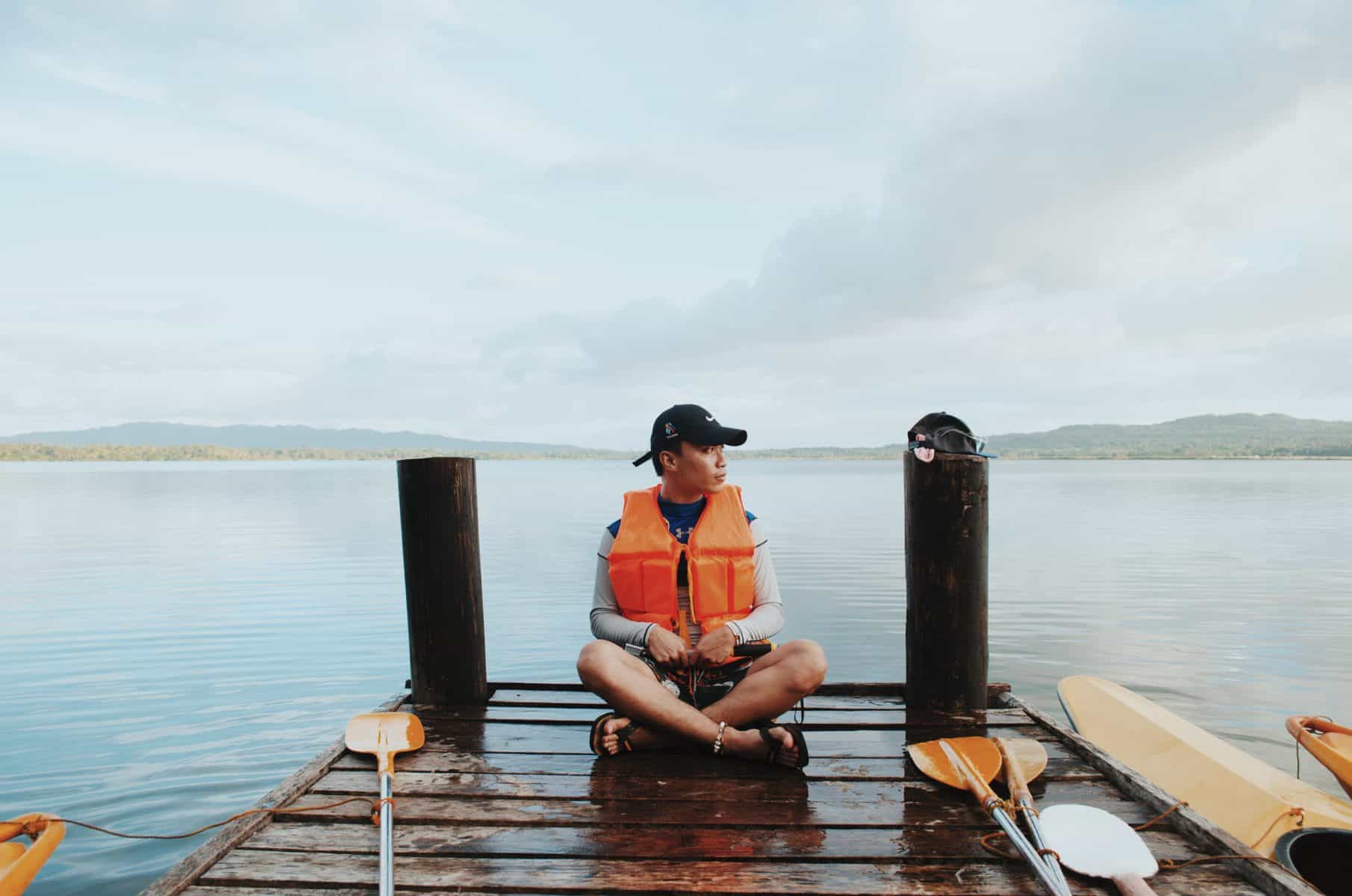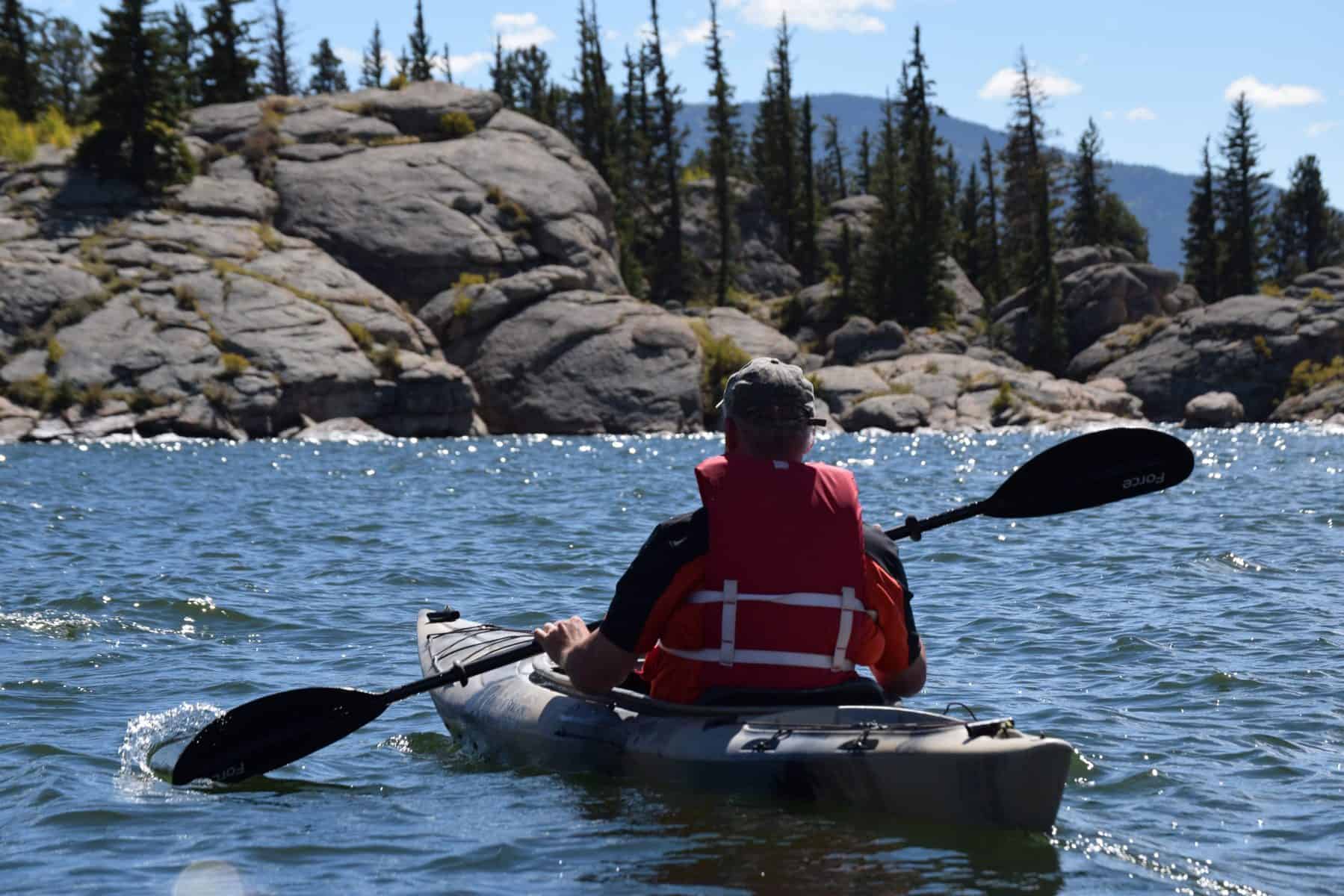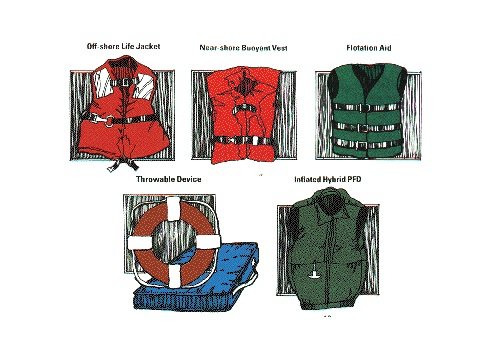How To Choose The Right Life Jacket For Your Needs
A life jacket is a personal flotation device (PFD) that comes in a variety of shapes, colors, sizes, and materials. Some life vests are made to be more rugged and last longer while others are made to protect you from cold water. No matter which life jacket you choose, be sure to get the one that is right for you, and provides the right level of safety.
While it might seem like “any life jacket will do” it really won’t. You need a PFD that suits your purpose. Select a PFD based on your planned activities, and the conditions you expect to encounter.
Remember, spending a little time now could save your life later. It needs to be an approved device designed for lifesaving purposes. United States Coast Guard (USCG) approval means that the PFD has passed rigorous testing. So, always look for the USCG approval number on any life jacket you buy. Be sure to read the manufacturer’s label and the “Think Safe” pamphlet that is attached to the device. Valuable information is contained within these resources.
You must have at least one U.S. Coast Guard-approved, wearable PFD for each person on board your vessel, and it must be the appropriate size and designed for the right purpose. Boats 16 feet or longer (generally excluding canoes and kayaks but check your state’s regulations) must also have one throwable device (Type IV PFD).
So, what kind of device do you need?
The Different Types Of Life Vest
Not all PFDs are created equal. Like most safety clothing, they are classed in different types, provide different buoyancy for different scenarios, and come made from different materials. The most popular types of life jackets are made from either standard
Standard PFDs
Standard PFDs are the most common type that you’ll see. They’re often worn by boat users, kayakers, and other water sports enthusiasts. They generally look like life vests, and they’re filled with a foam material for buoyancy and flotation. This type of PFD is generally classified as a Type III life vest by the USCG.
- Type III life vest
- Most common type of PFD
- Made from a buoyant foam material
- Ideal for boaters and kayakers
These popular life vests are the most common because of their practicality and durability. They’re low maintenance, incredibly buoyant, versatile, and functional. Unlike inflatable PFDs, these classic life jackets have useful pockets and other practicalities.
Inflatable PFDs
Inflatable PFDs are available in adult sizes only, are comfortable for continuous wear in hot weather and provide high flotation when inflated. They are good for adult swimmers involved in general boating activities. Because inflatable PFDs will not float without first being inflated, they are not considered appropriate for use by non-swimmers or weak swimmers, unless worn inflated. They are not for use by children younger than 16 years of age or by persons weighing less than 80 pounds.
- Comfortable, practical PFDs
- Require inflation – either manual or manual-auto inflation
- Only available in adult sizes
- Cannot be worn under restrictive clothing
- Not suitable for white water
Most inflatable life jackets use a replaceable CO2 gas cylinder as the primary means for inflating the PFD. They can also be inflated by blowing into an oral inflation tube. There are two types of inflation systems being offered on inflatable PFDs. One is called a manual inflation and requires the user to jerk on a pull-tab (lanyard) to inflate the PFD. The second is called manual-auto inflation and this type includes a back-up system designed to automatically inflate when the PFD is submerged. The manual-auto type PFD can also be inflated in the same manner as with the manual type. The CO2 gas cylinder is good for only one inflation.
Inflatable flotation devices must not be worn under restrictive clothing because automatic or accidental manual inflation could restrict breathing and cause injury or death. Inflatable PFDs are not suitable for use in whitewater, with personal watercraft, or while water-skiing, tubing, kneeboarding, or other similar activities.
What About Hybrid PFDs?
A hybrid inflatable PFD uses a mixture of inherently buoyant material and an inflatable chamber to provide flotation. An example of a hybrid would be a design similar to a jacket or parka with the buoyant material and inflatable chamber(s) sewn between the jacket’s outer material and liner. Unfortunately, the hybrid PFD designs are hot, bulky, and expensive.
These flotation devices are often used by kayakers, canoeists, stand-up paddle boarders, and other mild sports enthusiasts. They are compact and practical, comfortable to wear, but they can be quite expensive. Their dual-nature doesn’t come cheap!
Getting the Correct Sizing and Fit
It’s important that you invest in the right-sized life jacket if you’re heading out on the water. The wrong fit could be the difference between life and death! At the very least, the wrong size will be uncomfortable to wear and will restrict your movement—and that’s not ideal. Here’s how to find the right size for your needs.
Life Jackets For Adults
When it comes to purchasing the correct size for a PFD or life jacket, it’s essential to remember that you’re looking for a device that fits your chest size and not your weight. Before you start your search, make sure you know your chest size. A chest measurement should be taken at your chest’s broadest point. Armed with that size, follow the manufacturer’s size guide to find the right device size for your needs. Here’s how to size an adult life jacket correctly:
- A correctly worn PFD should be tightened with the security straps.
- To ensure a proper fit, loosen all the straps and put on the PFD.
- Tighten the straps until they’re snug but not uncomfortably tight.
- Once worn, if it can be lifted by the shoulders to a height higher than your nose, it’s too loose, or too large for your size.
Life Jackets For Kids
Sizing a PFD for children isn’t the same as sizing a life jacket for an adult. Rather than using a chest size to determine the best fit, child PFDs are sized by weight. A child’s weight should determine whether they use an infant PFD, child PFD, or youth PFD.
- Infant PFDs: 8–30 lbs
- Child PFDs: 30–50 lbs
- Youth PFDs: 50–90 lbs
Life Jackets For Dogs
Pet PFDs are surprisingly popular. Dog life jackets are essential if you’re taking your furry friend on a trip to sea. Even though many animals are strong and confident swimmers it’s still a safe idea to get them a life vest. It’s important to know that there aren’t any USCG-certified life vest options for animals but that doesn’t mean you shouldn’t invest in one. Here are three features to look out for:
- A snug fit: a good pet life vest will fit closely.
- Easy-release buckles: these fittings will make it easy for a human to strap their animal in or out of the pfd. This is essential in an emergency.
- Grab handles: a grab handle is a useful feature that allows you to easily lift your animal out of the sea!
Features and Specs
Before you blindly purchase a life jacket, you should also look out for what features and specs are included. It’s all very well buying the right type and the right size, but if it’s lacking in certain features, then it will be no good to you. For the best results, and to ensure that you’re getting the best PFD for your needs, consider the following features:
Flotation: Naturally, the first thing you should look at is the floatation ability of a personal flotation device. Buoyancy is calculated by measuring the force required to keep a user’s head above water. Almost all life vests will have more than enough buoyancy to keep an adult’s head and chin out of the water (usually between 7 to 12 pounds of extra flotation) but it’s a good metric to compare one device with another. The higher the device’s flotation rating, the better it may be for your needs.
Visibility: Surprisingly, not all life jackets are made using high-visibility colors. Consider looking for a bright, visible color that will be easy to spot against the kind of water in the location that you’re boating in. Bright yellow or orange is a good color to choose from. Reflective features are also worth looking out for. An eye-catching color with reflective details is ideal for this purpose.
Ventilation: Wearing a life jacket can be a sweaty business. If you’re boating in hot climates, you should look out for flotation devices that feature ventilation or breathable mesh materials to help keep you cool. There’s no reason to be uncomfortable!
Pockets: Non-inflatable life jackets usually come equipped with pockets of some kind. If you need storage space, consider looking at the dimensions of the pockets to see if they suit your needs.
Gear attachments: Some life jackets feature a number of tabs dotted across the vest that allows users to attach additional gear. For example, some life vests have tabs that you can attach a whistle, strobe light, fishing knife, or other survival equipment to.
Fishing-specific vests: Since a large percentage of boat users are anglers if you’re one of them it might be worth searching for fishing-specific PFDs. These fishing vests often feature useful additions, such as tool hangers, flip-down pocket tables, multiple pockets, and rod-holding loops.
PFD Classification
USCG classification: There are five categories of PFDs as determined by the U.S. Coast Guard, but kayakers, canoers, and stand-up paddleboarders almost always choose one of two types: Type III or Type V. This is because these PFDs are typically the most comfortable for these activities.
With that said, it can be helpful to know a bit about all types of life jackets available so you can decide which one is the best option for you:
Type I: Offshore Life Jacket
Type I life vests are tough and durable life-saving devices that are designed for the open sea, in remote and rough conditions, where rescue may be slow coming. These devices float you the best and have the ability to turn most unconscious wearers face-up in the water. Most have a high-visibility color scheme. You’re most likely to find these devices on commercial vehicles.
The only disadvantage to Type I life vest options is the fact that they’re bulky.
Type I Inflatables: Today, you can also buy USCG approved inflatable Type I flotation devices. Be sure to check for USCG approval if you’re choosing an inflatable device.
Type II: Near-Short Buoyant Vest
Type II PFDs are buoyant vests that are good for calm or inland conditions, or where there is a good chance of fast rescue. Good Type II devices will turn unconscious wearers face-up in the water in the event of an accident. They’re Less bulky, more comfortable than Type I but they’re not really designed for long hours in rough conditions. While good Type IIs can turn unconscious wearers face-up, many of them will not
Type II Inflatables: Some brands now have approval for inflatable Type IIs. Be sure to check for USCG approval before you buy.
Type III: Flotation Aid
These flotation devices are good for conscious users in inland water and where there is a good chance of fast rescue. Generally, these are the most comfortable type for continuous wear. They’re designed for general boating or specific activities that are marked on the device. These PFDs are available in a wide range of styles, including life vests, flotation coats, and more.
The disadvantages of these aids include the fact that wearers may have to tilt their head back to avoid being floated in a face-down position, and the fact that they’re not really designed for extended survival situations in rough waters.
Type III Inflatables: These exist. They will keep many unconscious wearers face-up after inflation but must be regularly inspected and re-armed to be reliable. Inflatables are not ideal for non-swimmers, or for long hours in rough conditions. Inflatables are not for use where a high-speed impact is likely to occur.
Type IV: Throwable Device
Throwable flotation devices are very useful. They can be thrown to someone from a distance, and they’re great backup life-saving tools. However, they’re best used in partnership with regular, wearable life vest types.
They do have a number of disadvantages: they can’t be used with unconscious people, and they’re not practical with non-swimmers or children. They’re also not designed to keep you safe for long periods of time in rougher waters.
Type V: Special Use Device
Type V PFDs are more convenient or useful for very specific activities. These devices generally need to be worn continuously and won’t be classed as approved if it’s not being worn. This continuous wear prevents boaters from being caught without protection. This is ideal since most accidents happen suddenly and unexpectedly.
There are some disadvantages. They can be less safe than other PFDs if they’re not used in accordance with the manufacturer’s instructions. Since they’re designed for specific purposes, they may not make for “universal” PFD equipment. Also, as mentioned above, some Type Vs are approved for use only when they’re worn. If marked this way, they are required to be worn to be counted as a regulation PFD.
Label Explanations
We’ve mentioned to always read the label repeatedly throughout this article, but what do those labels say, and what do their warnings mean? Here’s a quick summary of the most commonly found terms:
- “KAYAKSPORT” – This is the “intended use” statement as required by the Coast Guard. The designation “KAYAKING AND SAILING VEST” is the manufacturer’s suggested uses that do not necessarily limit this PFD to only those uses.
- “APPROVED” – As required by Coast Guard regulations, this is the “approved use” section. It must include the boat sizes on which this life jacket may be used and the weight (more than 90 lbs.) of the person for which the life jacket is designed. The “ML” is the stamp of the manufacturer’s inspector.
- “U.S. Coast Guard Approval” – The first six-digits of the approval number 160.064 indicates the Federal Regulation under which the Coast Guard approved this life jacket. The regulation section numbers differ by type of life jacket being approved.
- “Not intended for XYZ” – Underwriters’ Laboratory tests the structural integrity of the life jacket by placing it in a frame and dropping it into the water from a boat at six different angles. Often a buckle will explode or a zipper seam will peel like a banana. This disclaimer appears because many people mistake the structural integrity test for an endorsement of high-speed use. No life jacket should be used for water-skiing or similar use unless it has been tested at speeds of at least 50 mph. Older PFDs may say ‘impact tested’ instead of ‘strength tested’ but this is no indication of personal protection from impact. Unless a person is trained, hitting the surface at 50 mph can provide a similar experience to hitting the pavement after falling out of a car at the same speed.
- “UL” – Originally, the Coast Guard-approved life jackets in-house. They now require the life jacket manufacturer to contract for this testing with a recognized sanctioned laboratory. Underwriters’ Laboratory performs extensive tests on the life jacket under the Coast Guard’s oversight. UL controls the entire contents of this label. The “ISSUE NO. B-8009” is UL’s reference number for this specific label. Any changes to the label, no matter how small, require UL’s acceptance.
- “11041” – The lot number usually contains in code the year and quarter of manufacture. A lot cannot consist of more than 1,000 life jackets. A new lot must be started any time materials or production methods change. The lot number is important when contacting the manufacturer or the Coast Guard.
- “Polyvinyl chloride foam” – Different materials are used for flotation. Polyvinyl chloride and polyethylene foams are most commonly used. Foams do not readily absorb water over time. Avoid chemicals, fumes or excessive heat, which could break down the integrity of the foam. This life jacket contains at least 15.5 lbs. of flotation. This is sufficient flotation to keep the heads of 95 percent of the American population out of the water. Life jackets with 22 lbs. of flotation will keep 99 percent of the heads out of the water.
- “Model #” – Each manufacturer uses a model number, which usually indicates the type and size of the life jacket. The model number and lot number are important to know when contacting the manufacturer at the listed address.
- “Test this device” – For flotation to work, the device must be submerged below the water and displace water equal to the weight of the wearer’s head. Unless it is fastened tightly, many vests will “ride up” under the arms.














